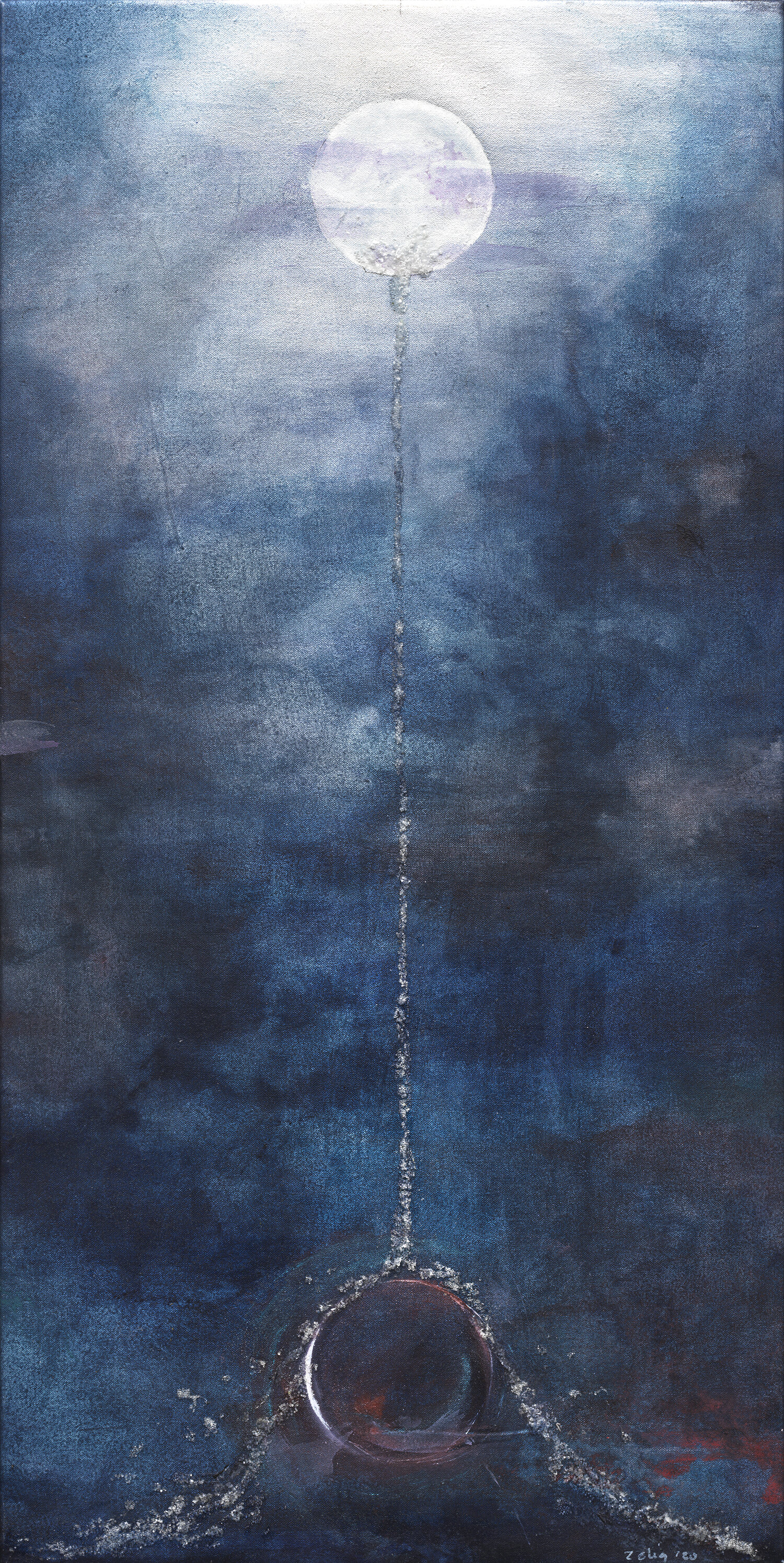HOLIDAYS & SABBATH
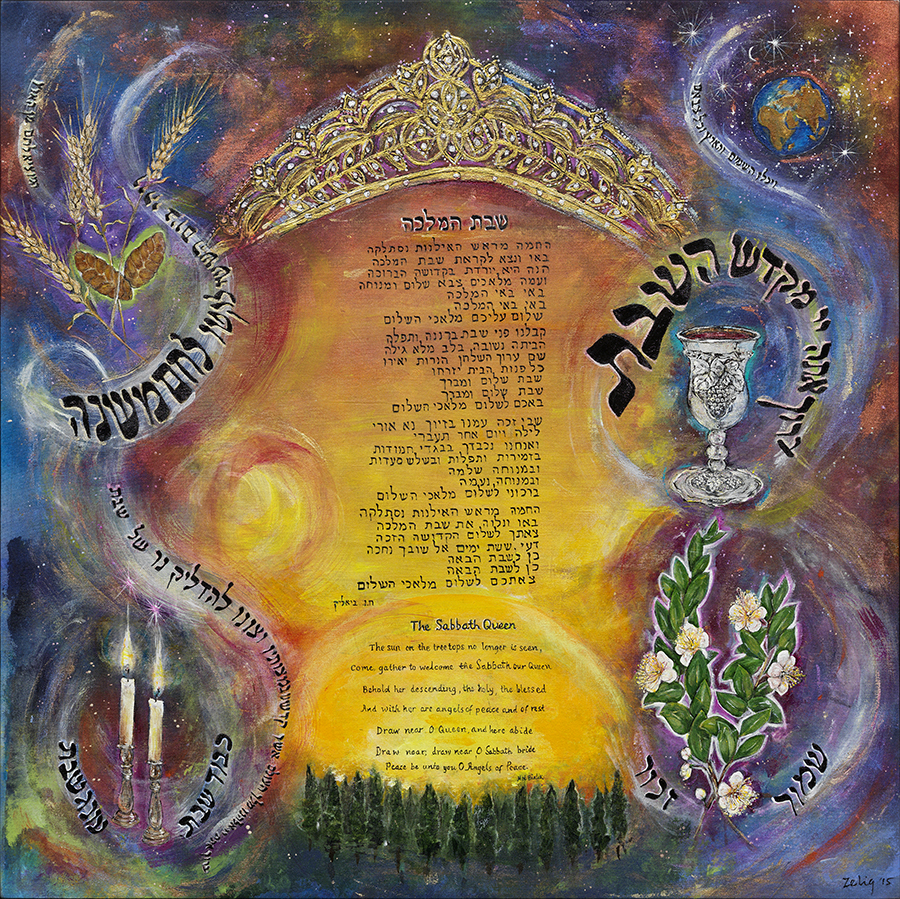
This painting honors the Jewish Sabbath. Both exalted and beloved, the Sabbath is called a “Queen” and a “Bride,” in Hebrew liturgy. Beneath the crown is the poem, The Sabbath Queen, by Hayim Nachman Bialik. The images surrounding the text represent Sabbath laws and customs.
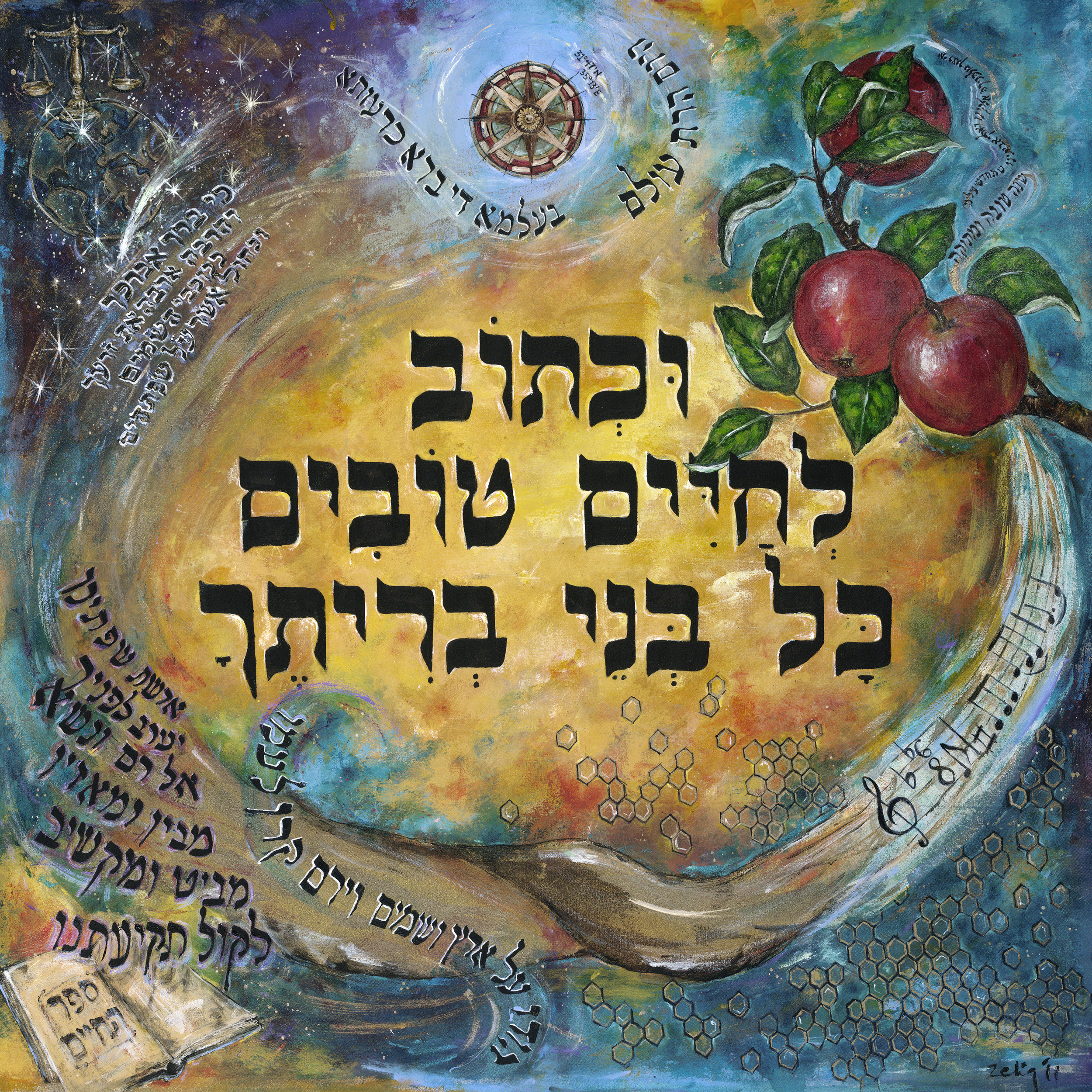
Rosh Hashana falls on the first day of the month of Tishrei. It leads to ten days of contemplation and repentance that culminate in Yom Kippur. The central passage is from the Jewish New Year liturgy, which asks God to “inscribe all the children of your brit, covenant, to a good life.” The blessing is surrounded by symbols and words that represent the holiday.
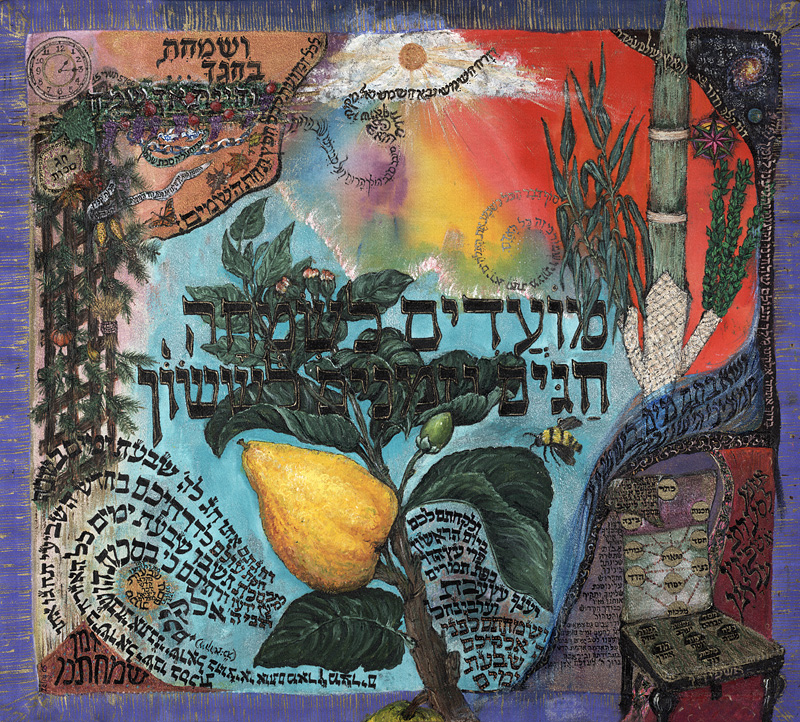
The fall holiday commemorates the harvest in ancient Israel. Jews gather in temporary, outdoor dwellings that are decorated with leaves and branches. This painting contains images and texts that reflect the customs and concepts about the holiday, which is both a “season of our joy,” and a time to reflect on the passage of the seasons.
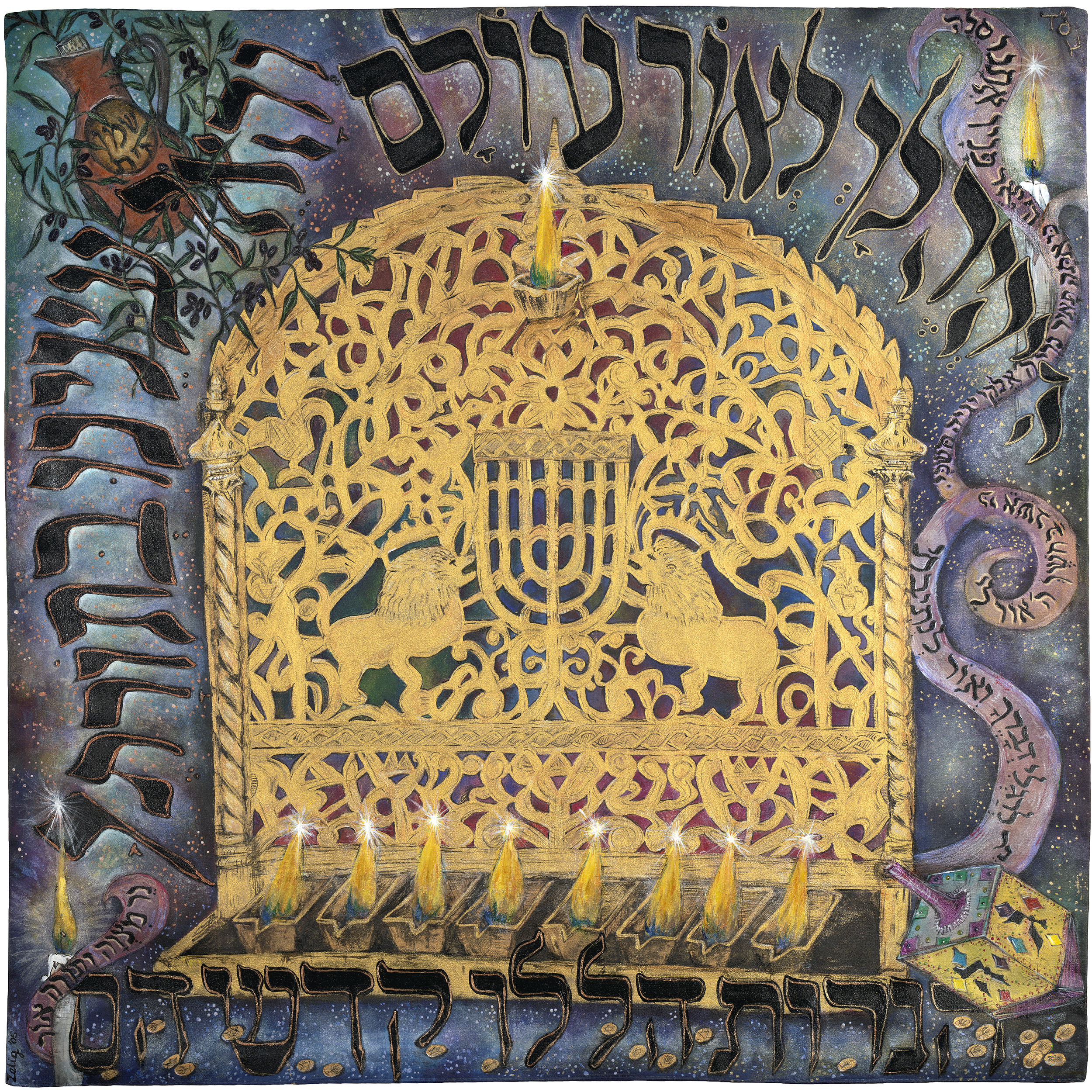
Chanukah commemorates the rededication of the Holy Temple after a military victory. On the holiday, we tell the story of the oil, where a day’s worth of oil was able to light the menorah, lampstand for eight days. This lamp is fashioned after antique Sephardic filigree menorahs. The quotations reflect light entering darkness. The olive oil jug represents the miracle of the oil, and the dreidel represents the traditional Chanukah game.
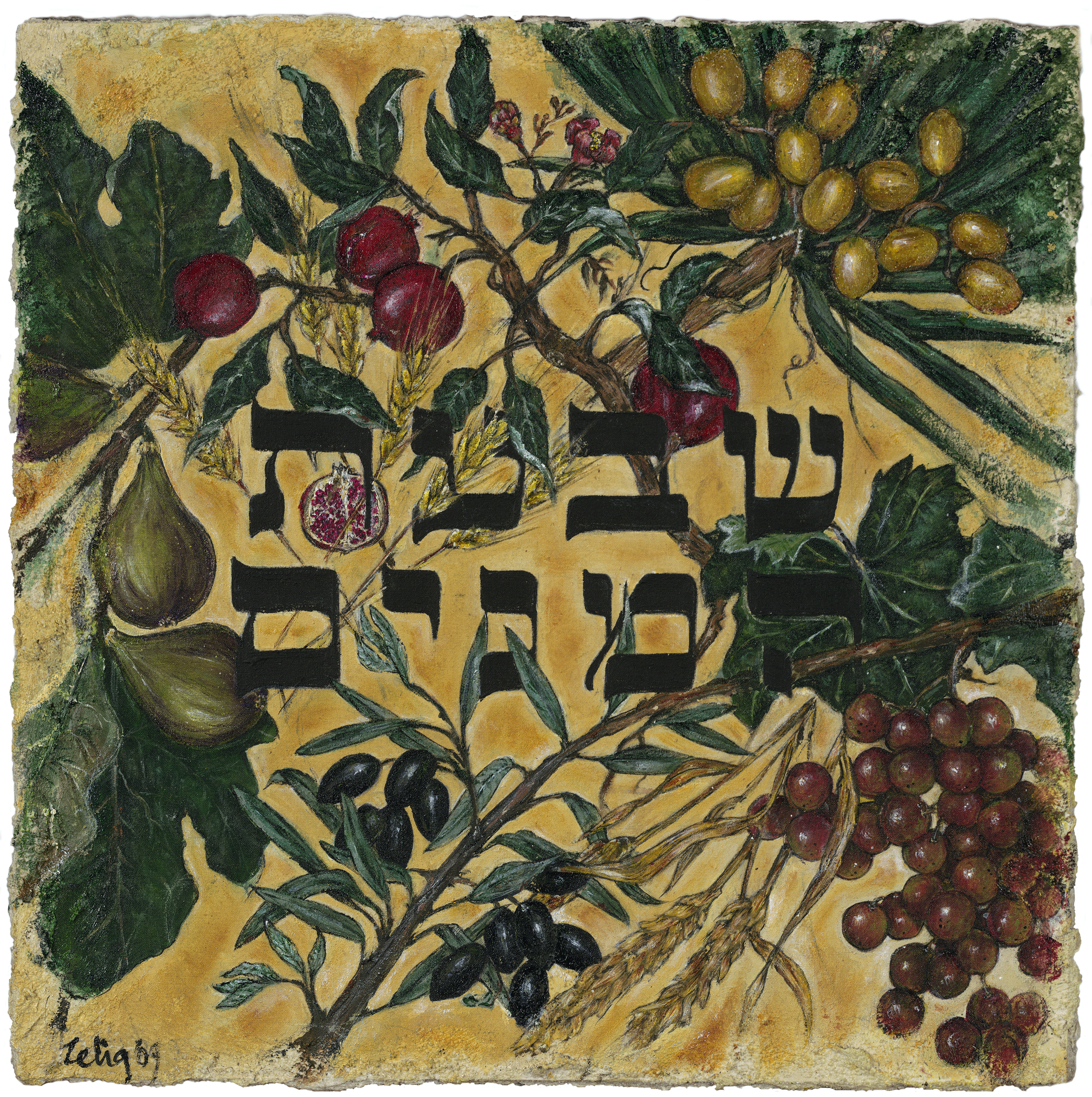
The fifteenth day of the Hebrew month of Shvat is “new year of the trees.” The seven species represent the bounty of the Land of Israel: For the Lord your God is bringing you to a good land…of wheat and barley, grapevines figs and pomegranates. A land of olive oil and date honey. (Deuteronomy 8:7-8)
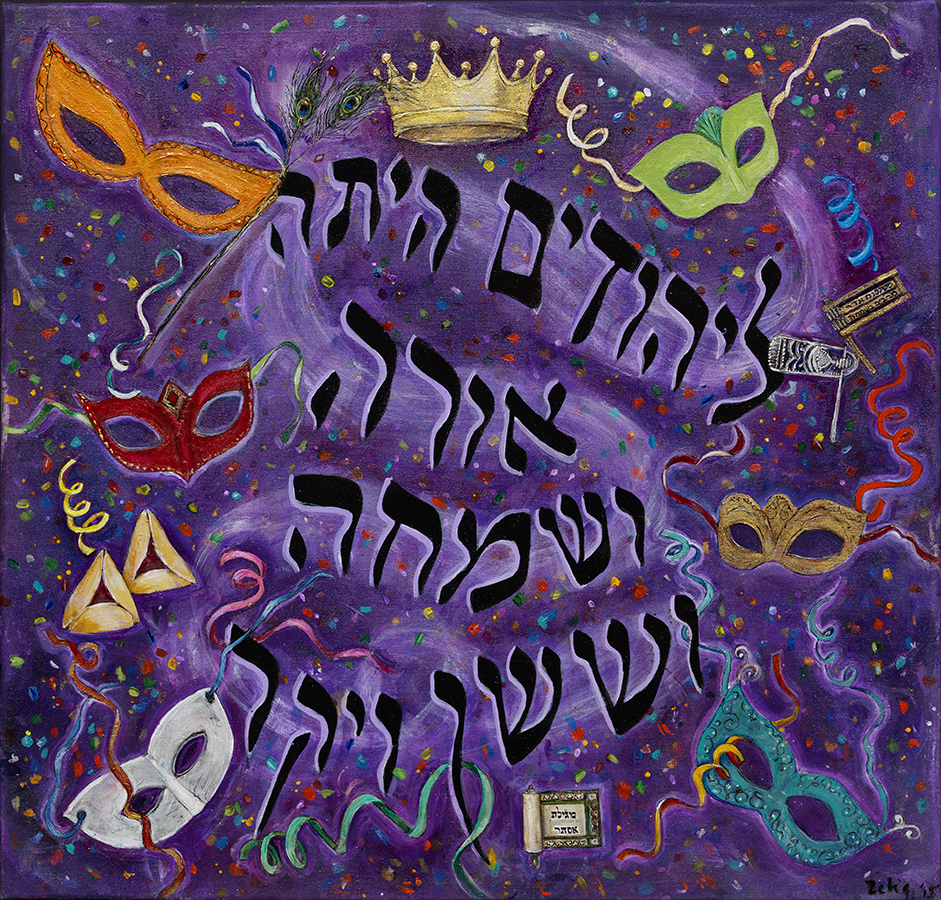
Purim is a joyful and mirthful festival that commemorates how Queen Esther, and her uncle Mordecai’s saved the Jews from the evil Haman's plot in ancient Persia. The central verse is from the Megillah of Esther, “The Jews had light and joy and gladness and glory.” Surrounding it are symbols and traditions of this spirited holiday.
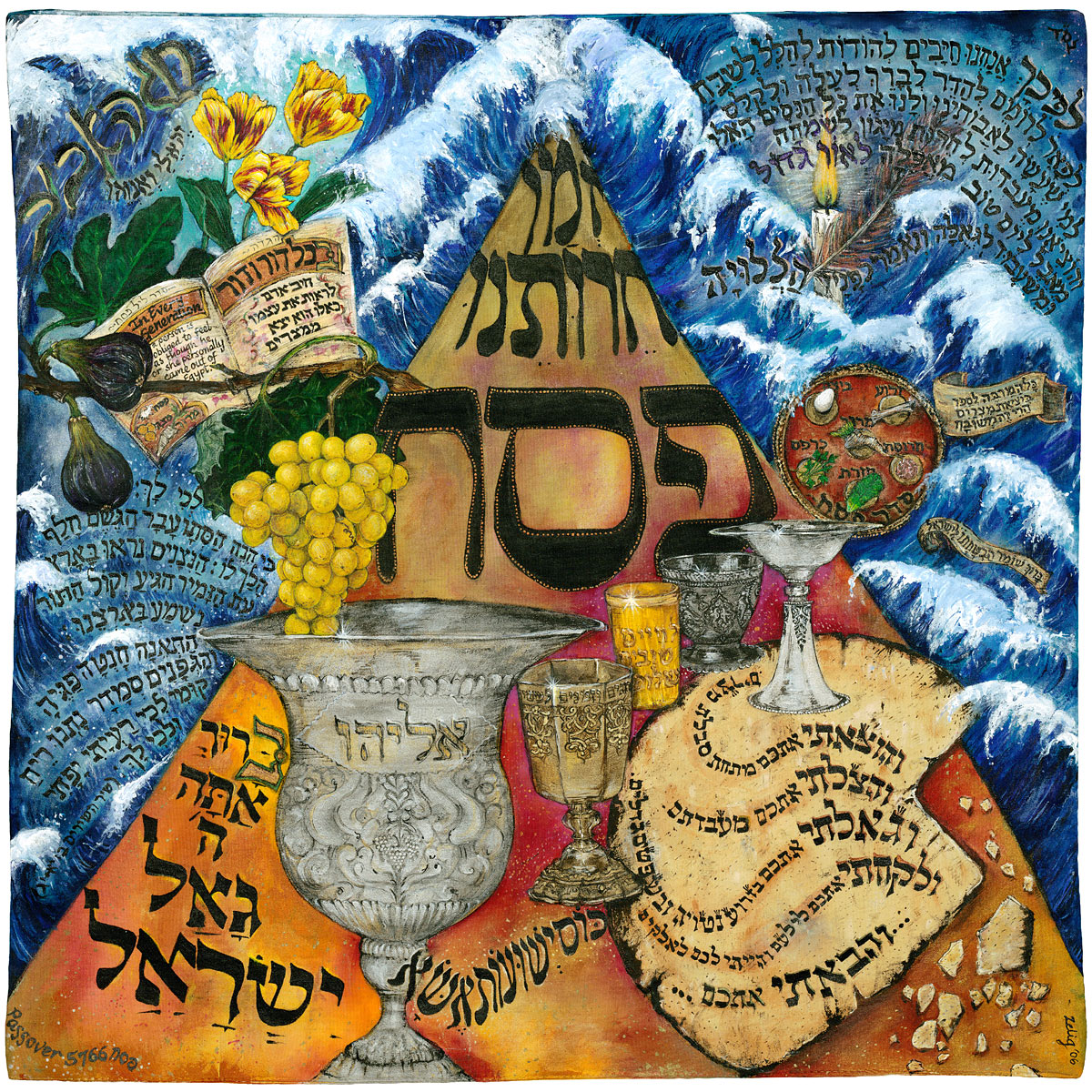
The splitting of the Red Sea forms three sections that represent aspects of the holiday: Spring, commemoration of the Exodus and the Season of Redemption. Texts and images are woven together into a complex and meaningful narrative.
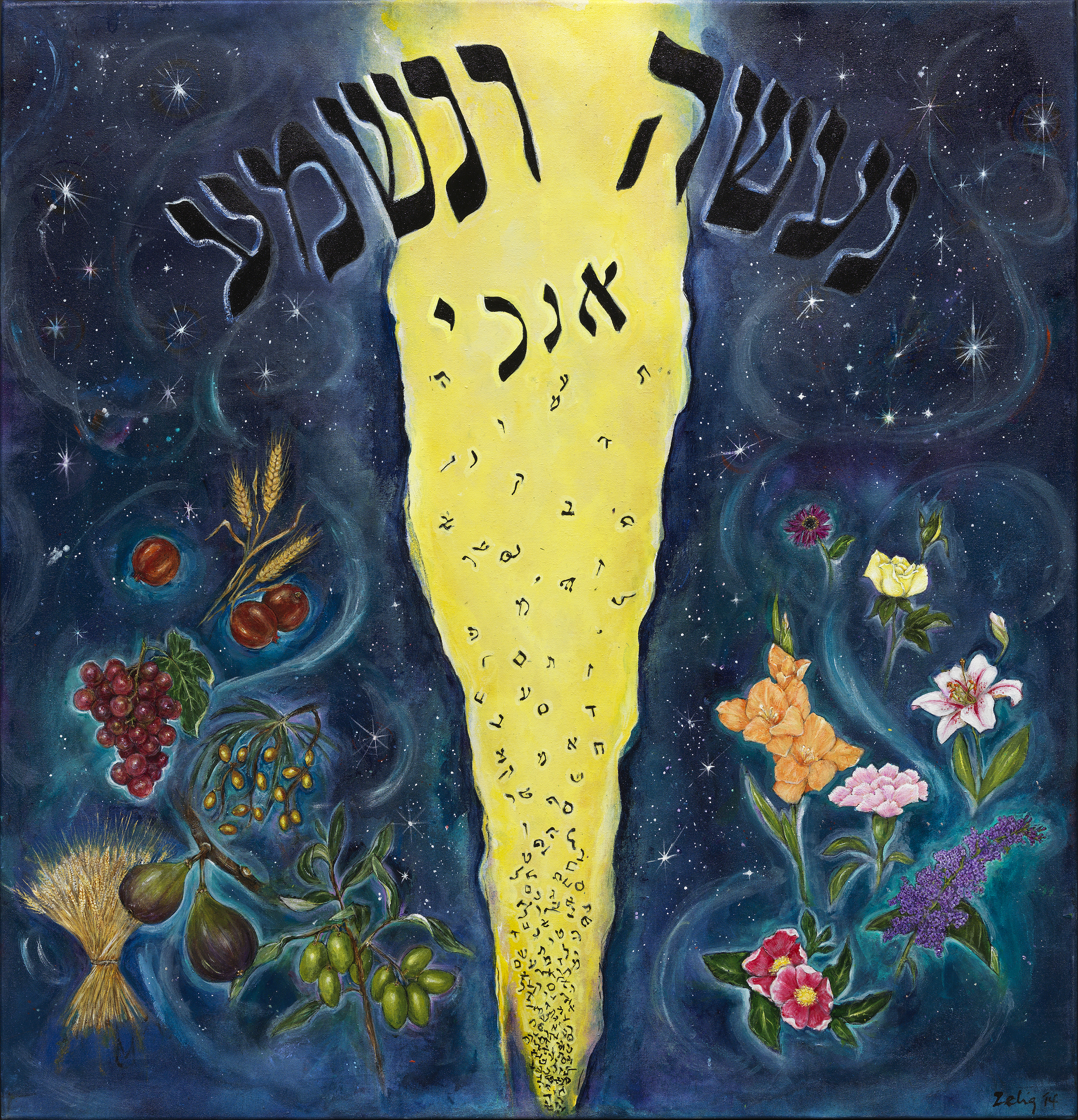
Feast of Weeks or the festival of reaping, is the anniversary of the Israelites’ assembling at Mount Sinai to receive the Torah and announcing “We Shall Do and We Shall Hear.” It is said that the sky opens up and reveals heavenly knowledge. The seven species of Israel represent the holiday of reaping, and flowers represent the custom of filling the home with flowers.
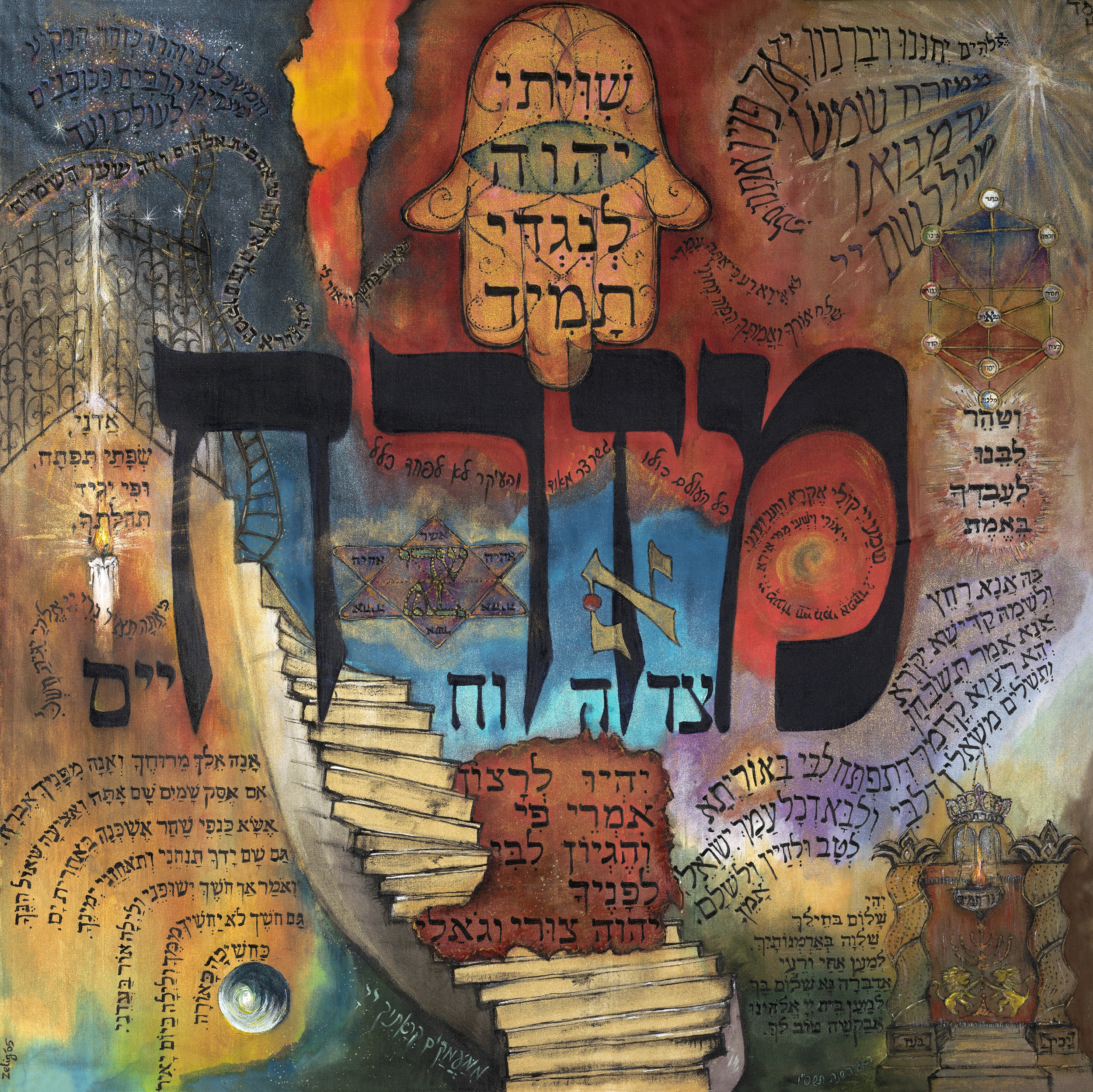
A mizrach plaque indicates the direction one turns to pray. This piece focuses on divinity and enlightenment. A complex weaving together of verses and images express the search for meaning, enlightenment and gratitude.
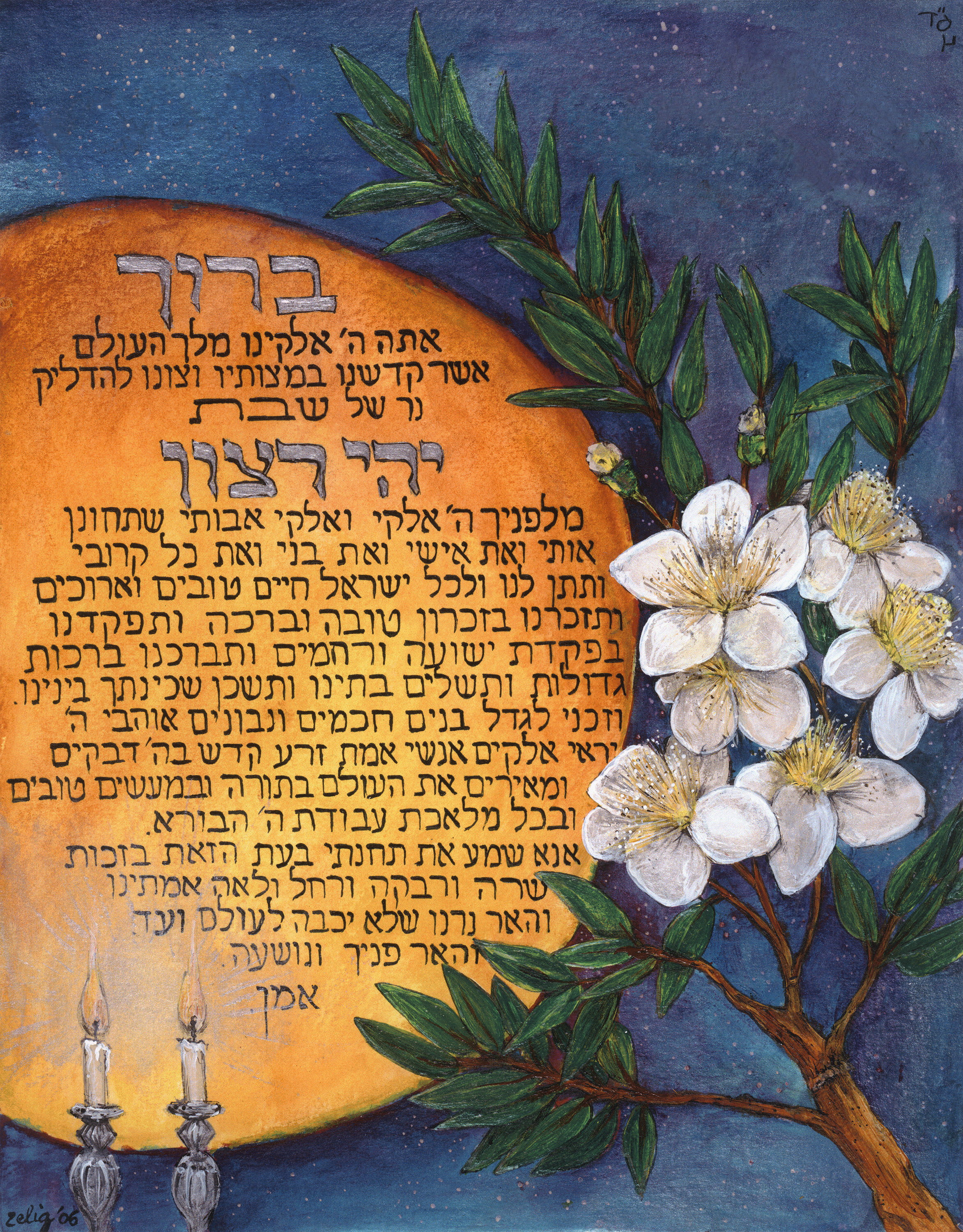
As they light the Sabbath candles, many Jews recite a prayer asking God to guard their families, grant their loved ones health and peace and to bring out their children’s best qualities. The orange circle on the left evokes the sunset. A flowering myrtle branch is associated with the Sabbath aesthetically, ritually and poetically.
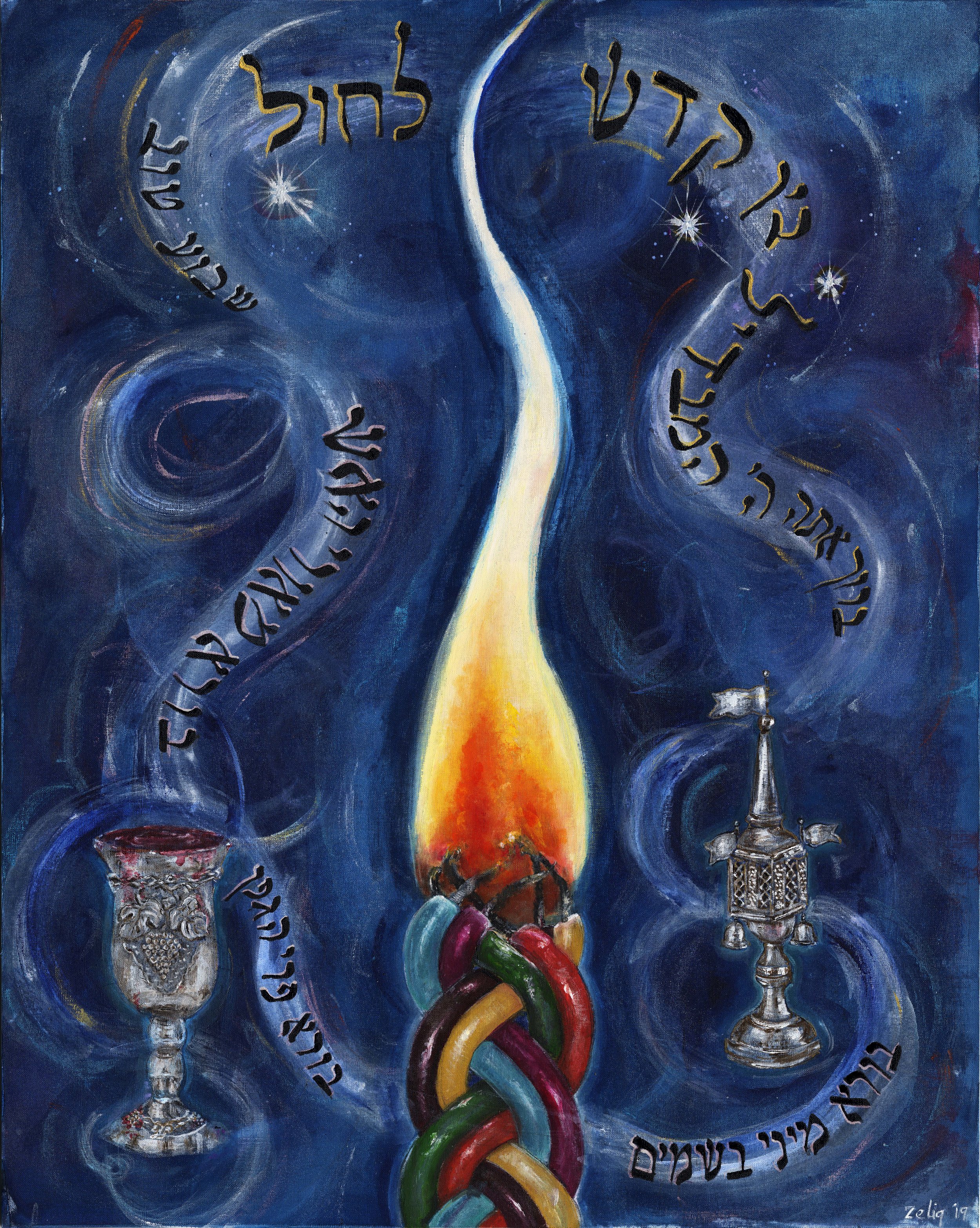
The Havadalah ceremony separates holy time from ordinary time. Ceremonial objects include a braided candle, a decorative container of fragrant spices and an overflowing cup of wine. The words are from the blessing: Blessed is the One who separates the sacred from the ordinary.
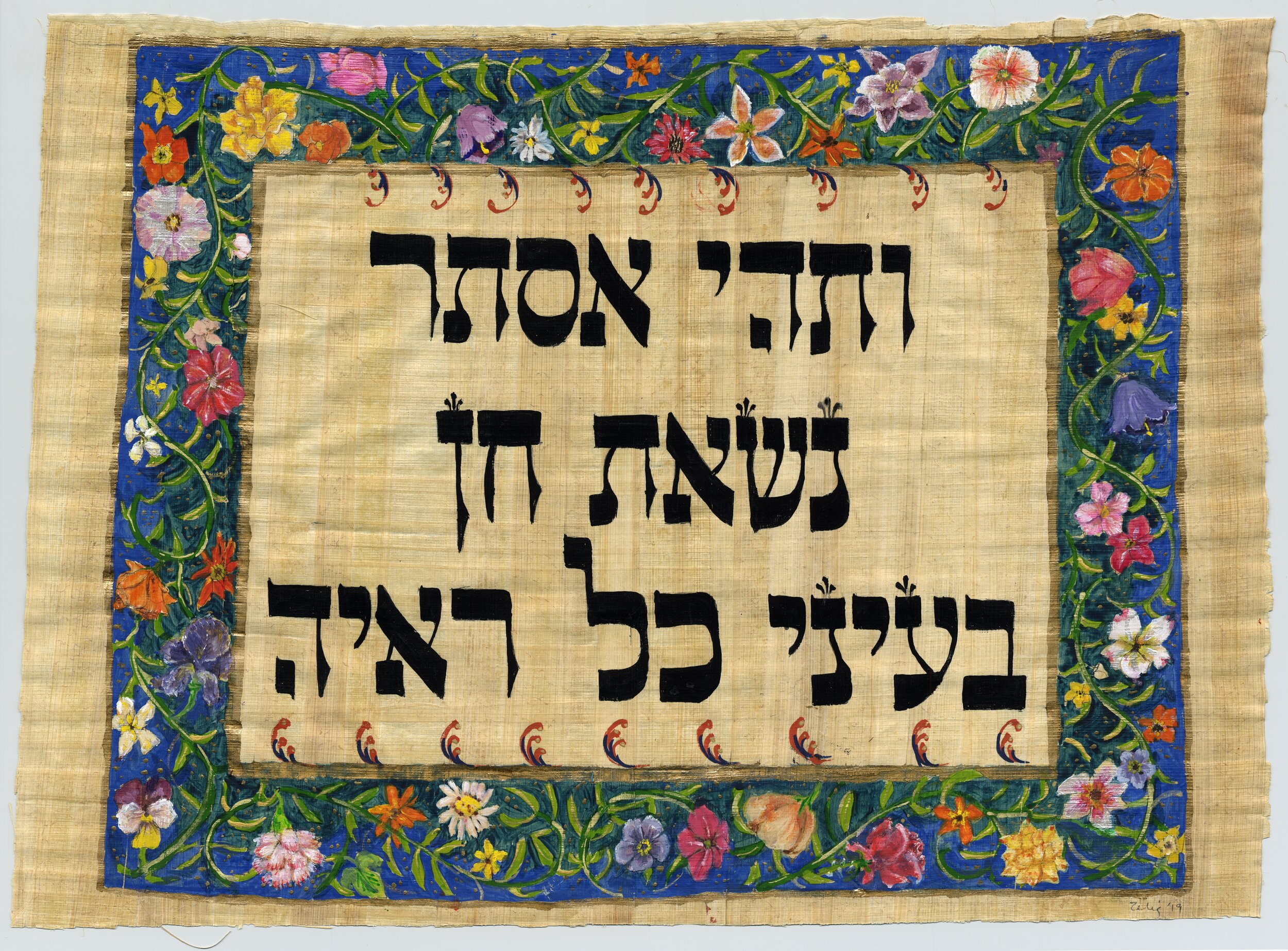
“Behold, Esther found favor in the eyes of all who saw her.”
